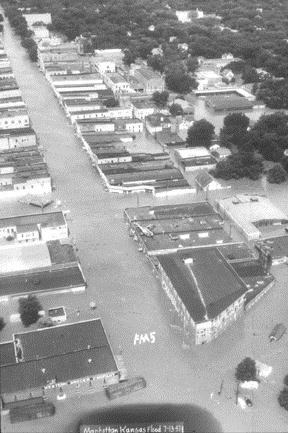Climate Extremes and Uncertainty
 Observed and projected changes in the frequency and severity of heat waves and heavy precipitation events have been linked to climate change by the recent literature, including the IPCC Special Report on Extremes (SREX), and a perspective article in Nature Climate Change. However, the impact of the changing climate on other types of extremes such as severe weather and hydrological events, including floods, droughts, storms, hurricanes, cyclones, and tornadoes, remains unclear. Mitigation policy requires quantifying the benefits of reducing emissions in terms of impacts avoided. Adaptation to natural hazards and constrained natural resources requires credible projections of extremes, along with their uncertainties, at local to regional scales. Delineating possible links between changes in weather extremes and changes in climate or land use are therefore directly relevant to both mitigation and adaptation planning.
Observed and projected changes in the frequency and severity of heat waves and heavy precipitation events have been linked to climate change by the recent literature, including the IPCC Special Report on Extremes (SREX), and a perspective article in Nature Climate Change. However, the impact of the changing climate on other types of extremes such as severe weather and hydrological events, including floods, droughts, storms, hurricanes, cyclones, and tornadoes, remains unclear. Mitigation policy requires quantifying the benefits of reducing emissions in terms of impacts avoided. Adaptation to natural hazards and constrained natural resources requires credible projections of extremes, along with their uncertainties, at local to regional scales. Delineating possible links between changes in weather extremes and changes in climate or land use are therefore directly relevant to both mitigation and adaptation planning.
Highlights:
Our work has explored / developed methodologies and techniques in several areas, including (a) characterization and trends, (b) uncertainty characterization and impacts and (c) enhanced prediction of climate extremes. Work in the area (a) has resulted in a recent (2014) paper in Scientific Reports, which is published by Nature, where we looked at the characterization of comparative projected changes in both cold and hot extremes. In another paper published in the journal Nature Climate Change (2012), we identified significant increasing spatial variability in the trends of rainfall extremes. In the second area (b), a Bayesian model aiming to combine multiple global climate models for quantifying uncertainty in regional mean temperature and precipitation extremes has been developed. In addition, ongoing work within the group as well as with outside collaborators generally overlaps all of these thrusts, specifically in the domains of precipitation extremes, drought characterization and statistical and dynamical downscaling, all of which can benefit from data driven techniques. The work in area (c) has also produced a paper (2014) that explored the application of a non-parametric Bayesian mixture of sparse regressions towards feature selection for statistical downscaling. Moreover, in a perspectives article (2014) in Nonlinear Processes in Geophysics we explored the possibility that physically cognizant mining of massive climate data may lead to significant advances in generating credible predictive insights about climate extremes and in turn, enable translating them to actionable metrics and information for adaptation and policy. Specifically, we proposed that data mining techniques geared towards extremes can help tackle the grand challenges in the development of interpretable climate projections, predictability, and uncertainty assessments.
In another effort, modeling of the non-stationarity of extreme events with time or other covariates, such as climate indices, was investigated. More specifically, this was done by incorporating time and covariates into the statistical models of extremes. The method was applied to sea level in Florida and rainfall in North Carolina.
In foundational work in the area of extreme value related questions and change detection problems, we have explored a variety of statistically oriented approaches to predictive modelling with applications to extreme values and change points. This includes work on quantiles and expectiles. During year 4, we have started considering the problem of quantifying uncertainty in change detection, and in estimation, inference or prediction relating to extreme values. We have obtained likelihood ratio tests for change detection and a paper on this topic is currently under review. This may be the first paper that quantifies variability and uncertainty in estimation and inference related to change points.
People: Chatterjee, Das, Ganguly, Kumar, Steinbach, Steinhaeuser